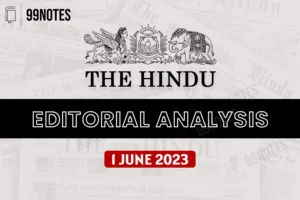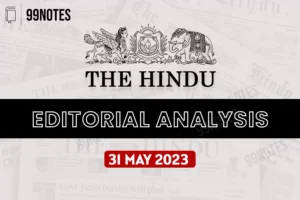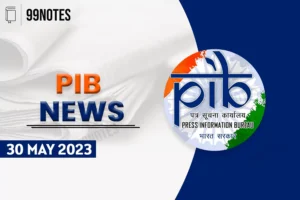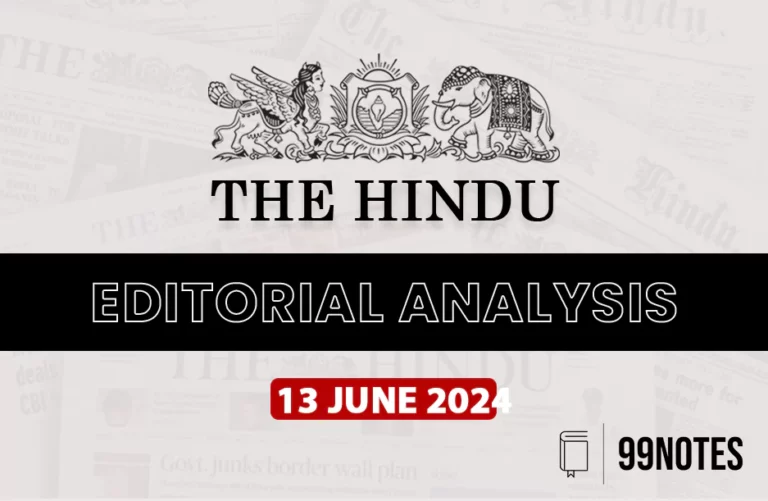2 June 2023 : The Hindu Editorial
The Hindu Editorial
2-June-2023
Daily Current Affairs For UPSC ,The Hindu Editorial Summary
1. At the root of India’s manufacturing challenge.
Topic: GS3 – Indian economy, Manufacturing sector.
Context:
-
-
-
The debate between manufacturing and services as the preferred path for India’s economy is a recurring topic in public discussions.
-
-
Issue:
-
-
-
In the early 2000s, India’s booming software exports led to the question of whether the services sector could leapfrog over manufacturing to drive economic growth.
-
This proposition challenged the traditional model of economic development, where industrial expansion typically precedes other sectors.
-
The frustration of Indian policymakers with the lack of manufacturing growth can be understood in this context.
-
The economic reforms of 1991 primarily focused on manufacturing, but they did not result in a significant increase in the share of manufacturing in the economy.
-
However, it is important to note that there has been a qualitative improvement in India’s manufacturing sector since 1991, with an impressive increase in the range and quality of products manufactured.
-
The rising quality and variety of goods without a proportional expansion of manufacturing suggests a growing income inequality in the country.
-
-
Historical data and the price of food:
-
-
-
Manufacturing in India received renewed attention after the launch of the “Make in India” campaign in 2014, which aimed to attract foreign direct investment.
-
The Production-Linked Incentive scheme was another policy initiative focused on manufacturing, but the results have not been impressive.
-
The first estimates for 2022-23 show manufacturing growth at 1.3%, lower than agriculture and services.
-
The slowdown in manufacturing can be attributed to factors such as demonetization in 2016 and structural issues within the sector.
-
The Finance Minister has called for a manufacturing push and emphasized the readiness of the Indian private sector, citing favorable policy initiatives and improved ease of doing business.
-
Public investment, as reflected in increased capital expenditure in the Union Budget, is expected to support the private sector and boost aggregate demand.
-
Household demand for manufactured goods is closely tied to the satisfaction of basic needs such as food, housing, health, and education. The high share of food expenditure in India constrains demand for other goods.
-
Successful exporters, such as economies in East Asia, rely on infrastructure and skilled workforces to reduce production costs and produce competitive products.
-
India faces challenges in terms of infrastructure, including reaching seaports and the relatively poor infrastructure and practices in its ports.
-
Factors such as transportation, inexpensive power, space availability, and proper industrial waste disposal services are also crucial for a competitive manufacturing sector.
-
-
Educational outcomes in India:
-
-
-
India lags behind in education compared to successful manufacturing countries, as seen in international assessments like the Programme for International Student Assessment (PISA) where India ranks low.
-
Non-governmental organization Pratham’s findings also reveal low reading and numeracy abilities among Indian schoolchildren.
-
Leading Indian employers have expressed concerns about the lack of employability of university graduates, indicating a broader issue in the education system.
-
Vocational training institutes in India are scarce, and technical training is limited, with only about 5% of Indian youth receiving such training compared to over 85% in South Korea.
-
The economic reforms of 1991 focused on manufacturing but overlooked the need for a comprehensive ecosystem, including education, training, and infrastructure, to support manufacturing.
-
Merely enacting legislation is not sufficient to build the necessary ecosystem for manufacturing success.
-
Liberalizing reforms have reached their limits in India.
-
-
2. Central Asian foreign policy multi-vectorism pays off
Topic: GS2 – International relations.
Context:
-
-
-
China hosted the C+C5 summit in Xi’an, which saw the participation of leaders from five Central Asian countries.
-
The Xi’an Declaration was jointly signed, outlining the future development of China-Central Asia relations and emphasizing the Belt and Road cooperation.
-
-
Issue:
-
-
-
The summit marked the inauguration of the China-Central Asia Summit mechanism, paving the way for biennial summits between these countries.
-
Central Asian countries have implemented a multi-vectored foreign policy beyond the Russia-China axis, maintaining balanced regional and international engagements.
-
The countries have prioritized economic and political ties with other centers of power, including the European Union, the United States, and regional security in Central Asia.
-
Turkmenistan maintains a policy of neutrality, Uzbekistan prioritizes regional security, Kyrgyzstan focuses on economic and security concerns, and Tajikistan pursues an open doors and peace-seeking policy.
-
The Central Asian countries’ multi-vector approach serves as an example for other post-Soviet states like Georgia and Moldova, emphasizing the importance of workable relations with Russia alongside aspirations for EU/NATO membership.
-
Moldova has expressed intentions to join the EU by 2030, but maintaining a multi-vectored foreign policy is crucial for lasting peace in the region.
-
A multi-vectored approach avoids perpetuating an unstable environment and the constant threat of escalation, promoting a greater sense of security.
-
-
3. Fiscal, monetary measures must remain growth supportive in coming quarters
Topic: GS3 – Indian economy.
Context:
-
-
-
The National Statistical Office’s provisional estimates show sustained momentum in the Indian economy despite headwinds.
-
-
Issue:
-
-
-
Gross domestic product (GDP) is estimated to have expanded by 6.1% in the January-March quarter, leading to a full-year growth rate of 7.2%.
-
Construction led the cross-sectoral growth, expanding by 10.4%, and the services sectors, particularly trade, hotels, and transport, posted growth rates of 9.1%.
-
Manufacturing rebounded from a contraction in the previous quarter, with a 4.5% expansion, and manufacturing GVA saw a significant sequential growth of 20.4%.
-
The latest PMI reading shows a rise in factory orders in May, indicating a positive outlook for the manufacturing sector.
-
Gross fixed capital formation (investment activity) regained strength in the fourth quarter, expanding by 8.9% year-on-year and 20.8% sequentially, supported by increased government capital spending.
-
Private consumption spending, however, has not yet regained a firm footing and contracted by 3.2% in the March quarter.
-
The outlook for farm output and rural spending is uncertain due to the possibility of a rainfall deficit-inducing El Niño.
-
Policymakers need to ensure that fiscal and monetary measures remain supportive of growth in the coming quarters.
-
-
For Enquiry

2 June 2023 : The Hindu Editorial

2 Jun2 2023 : Daily Current Affairs

1 June 2023 : PIB

1 June 2023 : The Hindu Editorial

1 June 2023 : Daily Current Affairs

31 May 2023 : The Hindu Editorial

31 May 2023 : PIB

31 May 2023 : Daily Current Affairs

30 May 2023 : PIB

29 May 2023 : PIB
The Hindu 2 June 2023 : The Hindu Editorial The Hindu Editorial
1-June-2023
Daily Current Affairs For UPSC ,The Hindu Editorial Summary
Facebook-f
Twitter
Youtube…
Daily Current Affairs 2 Jun2 2023 : Daily Current Affairs DAILY CURRENT AFFAIRS
2-June-2023
Daily Current Affairs For UPSC ,Daily Current affairs of The hIndu…
PIB 1 June 2023 : PIB PRESS INFORMATION BUREAU
1-June-2023
Daily Current Affairs For UPSC ,The PIB ( Press Information Bureau…
The Hindu 1 June 2023 : The Hindu Editorial The Hindu Editorial
1-June-2023
Daily Current Affairs For UPSC ,The Hindu Editorial Summary
Facebook-f
Twitter
Youtube…
Daily Current Affairs 1 June 2023 : Daily Current Affairs DAILY CURRENT AFFAIRS
1-June-2023
Daily Current Affairs For UPSC ,Daily Current affairs of The hIndu…
The Hindu 31 May 2023 : The Hindu Editorial The Hindu Editorial
31-May-2023
Daily Current Affairs For UPSC ,The Hindu Editorial Summary
Facebook-f
Twitter
Youtube…
PIB 31 May 2023 : PIB PRESS INFORMATION BUREAU
31-May-2023
Daily Current Affairs For UPSC ,The PIB ( Press Information Bureau…
Daily Current Affairs 31 May 2023 : Daily Current Affairs DAILY CURRENT AFFAIRS
31-May-2023
Daily Current Affairs For UPSC ,Daily Current affairs of The hIndu…
PIB 30 May 2023 : PIB PRESS INFORMATION BUREAU
30-May-2023
Daily Current Affairs For UPSC ,The PIB ( Press Information Bureau…
PIB 29 May 2023 : PIB PRESS INFORMATION BUREAU
29-May-2023
Daily Current Affairs For UPSC ,The PIB ( Press Information Bureau…







